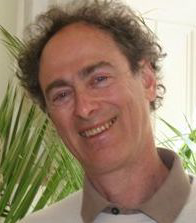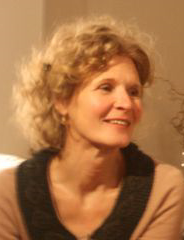 |
Charles
"I like to open up more and
more to the totality of what my patients experience, all while
developing and using my own individuality in our work together"
|
-
Born and raised in USA
(New York)
-
Psychotherapy training in
Belgium and Imago couples coaching training in Switzerland and USA
.jpg)
-
Thirty years of psychotherapy experience - in social work
organizations, general and psychiatric hospitals, prisons and
private practice
Videos
about my work with couples :
- 1st video : PERSONAL PRESENTATION (2'30)
- 2nd video : INTERVIEW about how I work with Couples (6'30)
Interview of Dr. Charles
Hershkowitz, MD,
Imago Relationship Therapist
Tell us about your background
and training.
I’m an American from New York,
and started first on a
scientific career there in
Physics. Subsequently I came to
live in Belgium & in 1969 got my
‘Licence en Sciences Physiques’
from ULB. However, I decided to
leave pure science to become a
psychiatrist and psychotherapist
instead; I went through medical
school and then psychiatric
post-graduate work in ULB-associated
hospitals, & qualified as a
psychiatrist in 1987.
After starting training in 2002
in Imago Relationship Therapy
or IRT (www.ImagoRelationships.org
, or also
click here
for a brief summary), I was
certified as IRT practitioner in
2007. I also have trained in
various other psychotherapy
methods, the most recent being
EMDR and Voice
Dialogue (www.VoiceDialogue.org
).
And what do you do now?
I’ve focused on my
private
practice, which is in French
and English in 1200 Brussels (Woluwé-St.
Lambert). In the individual
therapies, an important
theme is how can this person
understand the deeper
personality roots which
influence how he/she acts in
intimate relationships and
possibly make changes on some
level. With single people, I
often work on their difficulty
to get started in a close
relationship or remain committed
when the going gets rough. As
for couple therapy, it
makes up more than half of my
practice; occasionally my wife
Doris, who is also trained in
IRT, works with couples at my
side.
I’ve led, over the last five
years, 15 weekend workshops.
These mix singles with people in
a couple but coming alone. They
help participants identify the
early emotional wounding which
is very pertinent to their
difficulties in couplehood, and
start loosening the hold of this
wounding on their present lives.
It was impressive and moving to
see how the Imago tools helped
all these very different
participants feel safe enough to
open up within the group to some
of their deepest inner wounds
and then started taking
practical measures to distance
themselves from the behaviors
stemming from those wounds.
For a couple in Imago therapy,
how do sessions go practically ?
Q.
To start couple therapy, do
both partners have to come to
the first session ?
A.
Usually yes -- but sometimes
it’s better first seeing one or
the other or even both partners
alone once. This can bring the
more reluctant partner to know
more realistically what the
therapy will be like and so feel
more safe when the first couple
session occurs.
Q.
What happens then ?
A. During the first
session or two, each partner
tells his/her version of what’s
wrong and why. As I hear each
partner’s story, I attune my
receptivity in order to embrace
their 2 very different worlds as
much as I can, and rephrase what
I’m hearing in order to check
whether I’ve gotten the person
right. This helps develop safety for the person
speaking, and decreases the
natural tension, anxiety and
often shame at vulnerably
sharing one’s “dirty linen” with
a stranger.
By the 3rd session, the
specific Imago tools start
being learned and applied. Most
of the session time (N.B.:
couple sessions are an hour and
half long) is now spent with the
partners face-to-face as I coach
them to deal very differently
with what they choose to expose.
Q.
What are some of the typical
themes which are worked on
face-to-face with these tools ?
A. Here is a partial list, but
themes vary quite a lot among
couples :
Criticism and how can it be
phased out by other forms of
expression ?
How can deep empathy between
them return despite all the
distancing ?
When very high reactivity to
“small” triggers keep occurring,
what childhood wounding is
showing itself and just how does
it influence behavior patterns
?
What’s gone wrong with sex and
how might its quality be
restored
What was going on unconsciously
at the time of their choice of
each other, and how have certain
negative behaviors developed and
locked in from that choice ?
How can the new "tools"
experienced in sessions be used
on their own at home ?
How important
are techniques in what you do ?
IRT does use
specific
procedural instructions
regarding communication more
than most other therapies.
Here’s why. Most conversations
between two people neglect how
key it is to meet several basic
human needs in order to have a
truly satisfying result for
both. Three of these needs, on
the speaker’s side, are: 1) to
be accurately heard; 2)
to be validated as having
a personally meaningful logic;
3) to receive empathy
from the other person
when vulnerably expressing a
feeling.
IRT has developed ways of
speaking for each of the 2
communicators that target these
3 essential results. The name
given to this way of speaking is
Intentional Dialogue or
Imago Dialogue (I.D.).
The content expressed by the
partner speaking in an I.D. is
quite free, whereas the form is
coached by the therapist. The
ways of responding by the
partner listening are also
coached. The coaching targets a
rapid decrease of suffering for
both partners.
Following the ground rules of an
I.D. will typically result in a
peaceful, accepting feeling
between the partners. Feeling
this way helps the partners
believe again in their couple.
If a couple
has separated or is close to
doing so, does getting them back
together again mean your therapy
has been successful ?
When separating partners come, I
am oriented to get them to
experience a moment of deep
empathy because this may
motivate them to believe again
in their couple's potential,
despite all the frustration and
pain, and then to commit to get
to work on their relationship.
Either a moment of empathy does
not take place and the couple
will tend to concretize their
separation or divorce, or it
does happen and they may decide
to “give it another try”. In the
latter case, a sort of
pre-therapy will have been
successful, but the “nuts and
bolts” still have to be worked
through : developing new
behavioural responses to
each other when under stress and
the cognitive challenge of
figuring out together how their
“frustration machine” functions
and where it comes from.
When is a
couple therapy really over ?
Here’s an overview of the
three typical stages of an
Imago therapy (N.B. session
frequency = 1/ 2-3 weeks):
First stage
(about 5-6 sessions) :
presentation of their difficult
experiences with each other;
learning the Imago tools and the
I.D. and applying it to
communicating about these
experiences; during I.D.s, a few
moments of empathy occur; when
the individual past of a partner
comes powerfully up when working
on a present problem, new
realizations are gained about
the emotional wounding each is
carrying into their
relationship,.
Second stage
(about 4-8 sessions) : more
detailed discovery of unknown
aspects of the partner;
challenge of accepting these
rather than excluding them (by
negative judgments, etc.) as
previously done; the basic tools
of I.D. plus more advanced ones,
are used more skillfully; doing
I.D.s at home between sessions
becomes possible; awareness
increases of what the choice of
this particular person for a
long-term relationship means.
Third stage : higher and
higher level of problem-solving
abilities; being cooperative
when a relational difficulty
arises sometimes takes the fore
over being automatically
adversarial; a conflict
sometimes is felt to be an
opportunity to learn something;
flexibility under stress
increases; the full, authentic
self of each partner comes out,
including ‘negative’ aspects,
with less fear of rejection or
break-up; acceptance of the
otherness of the partner becomes
a new norm; strength of
commitment grows as the couple
moves through difficulties more
fluidly.
|
|
|
|
 |
Doris
" I’m excited by the challenge of
lifelong
learning, and continuing to transmit my insights to
others enables me to grow even more. The possibilities
of the spirit are infinite."
|
-
Born and raised in Austria (Vienna)
-
Training in systemic family therapy and psychodrama in Austria and
in Imago couples coaching in Switzerland and USA
-
E.A.P.-certified (European Association of Psychotherapy)
How the therapy modalities we now offer
were developed
After
we met in 2000, Doris soon started contributing to the way of doing
"Emotional Work" with patients -- in individual sessions, with couples
and with small groups --, that I had developed in Brussels since 1990.
In
2002, Doris heard about the Imago method, which is a hands-on, very
direct way of working on emotions between partners, and has a powerful
theoretical model underpinning its innovative ways of working on
relationships.
Soon
after attending a 3-day Imago couples workshop together in 2002, we
enrolled in the Imago training program held in Switzerland, in French.
We attended these training sessions together ; in 2007, I was
certified as Imago Relationship Therapist by the New York-based
institute I.R.I. whose website is :
www.ImagoRelationships.org
As
Doris and I worked on our own couple experiences using these new Imago
"tools", we developed and continually refined a set of specific,
structured procedures for helping the partners in couples (and
occasionally parent-child relationships) to understand each other's
distinctive inner worlds, make giant steps in mutual empathy and on this
enriched basis concretely reshape their ways of communicating.
As
I applied this in my Brussels sessions, and as I blended in some
features of other training I got in Voice Dialogue, Visualization, and
EMDR therapy, my therapy work took on its present form.
My
3
objectives in relationship work
·
Individual Therapies:
Use the powerful tools of Imago Therapy to help patients identify
more clearly their negative relationship patterns,
on both the cognitive level (inner beliefs) and the behavioral level (acting and speaking), and to initiate change of certain of these
·
Couple Therapies:
-
Help couples to find resources within each partner for acting
differently with the other, so as to bring their relationship out of
the boring stagnation of living on distant, parallel tracks or the
exhausting tension of repetitive conflicts.
-
In case break-up is unavoidable, help the separated or divorcing
partners to cooperate me effectively in the new situation -- especially regarding
their children.
·
Imago training:
As
a certified Imago practitioner but not qualified to dispense formal
training in Imago Relationship Therapy, I work at getting our method known to more people
in Belgium, including therapists, and inspire some of these to take training in
it. Excellent training programs are available, for example, in
Switzerland, Great Britain, Irish Republic and Austria.
|
